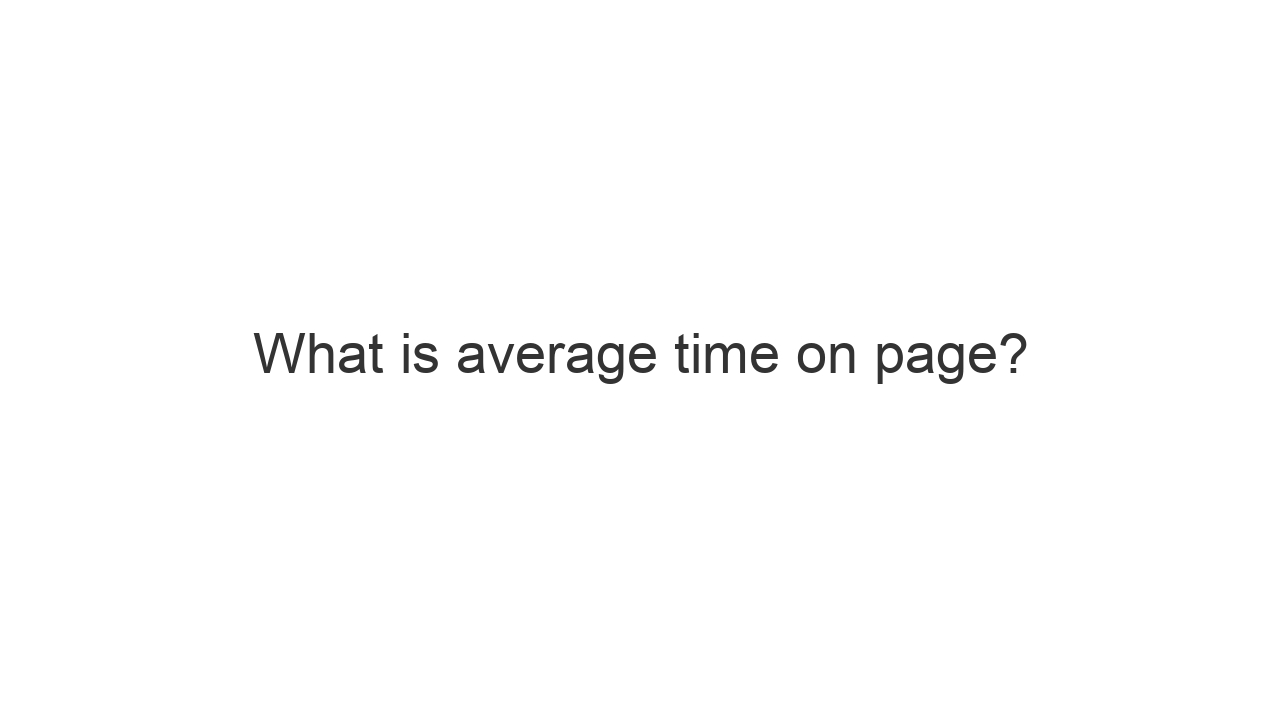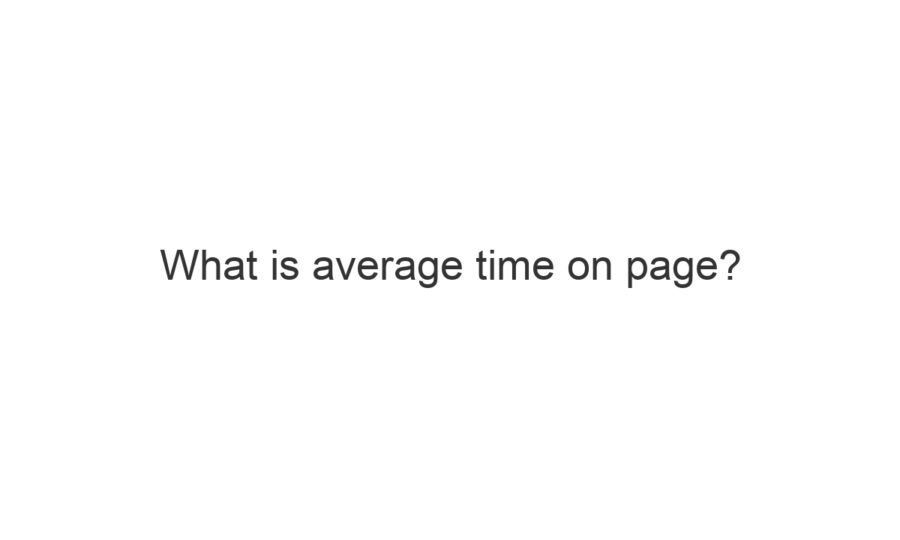Time on page measures the difference between when opens a webpage and then clicks another link. Or opens a new tab and visits the same domain. A common fallacy is that time on page represents all users, when it only captures those that complete those actions. So it is not reflective of an overall audience. It tends to skew up.
Average time on page, takes any datapoints it has collected for time on page, and spreads it out as an average. A mistake is to assume that this is the average for all users. Time on page only measures a subset of users which took that action.
It would be better to use a newer metric like Attention, which measures second by second, how long someone engages on a page for ALL users. This gives a more accurate view of what the customer is doing.

|
|---|



